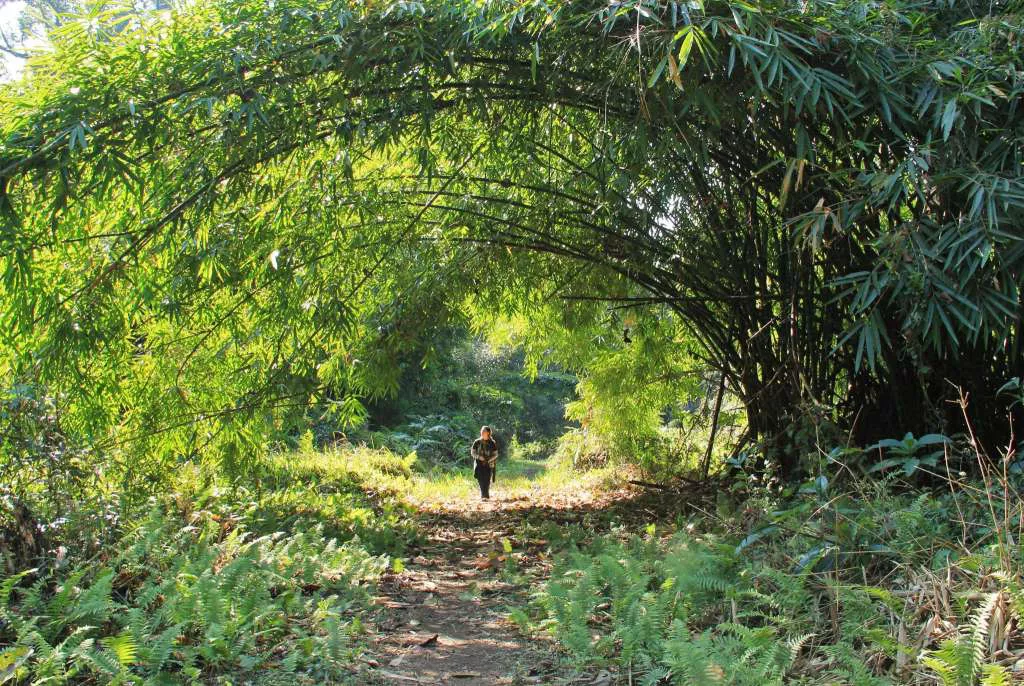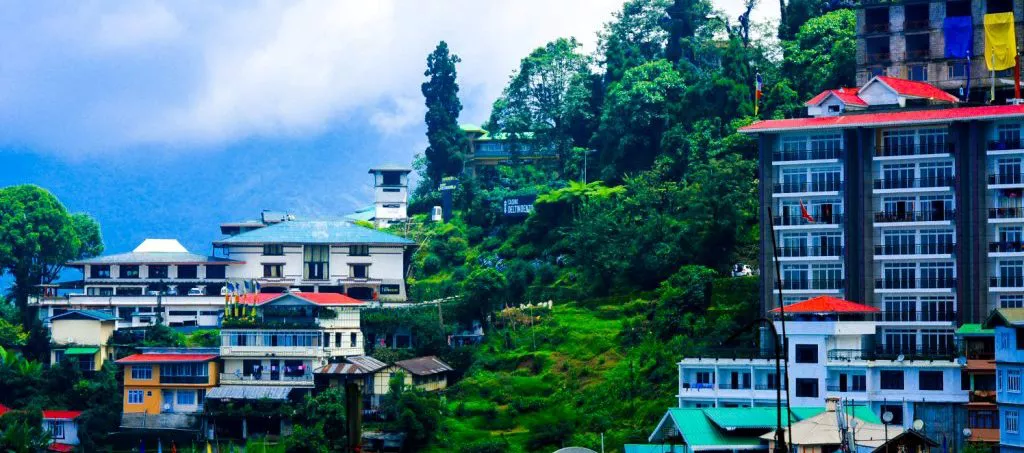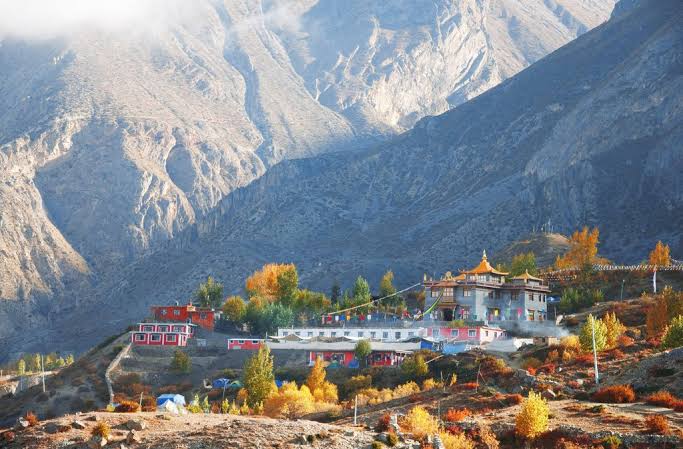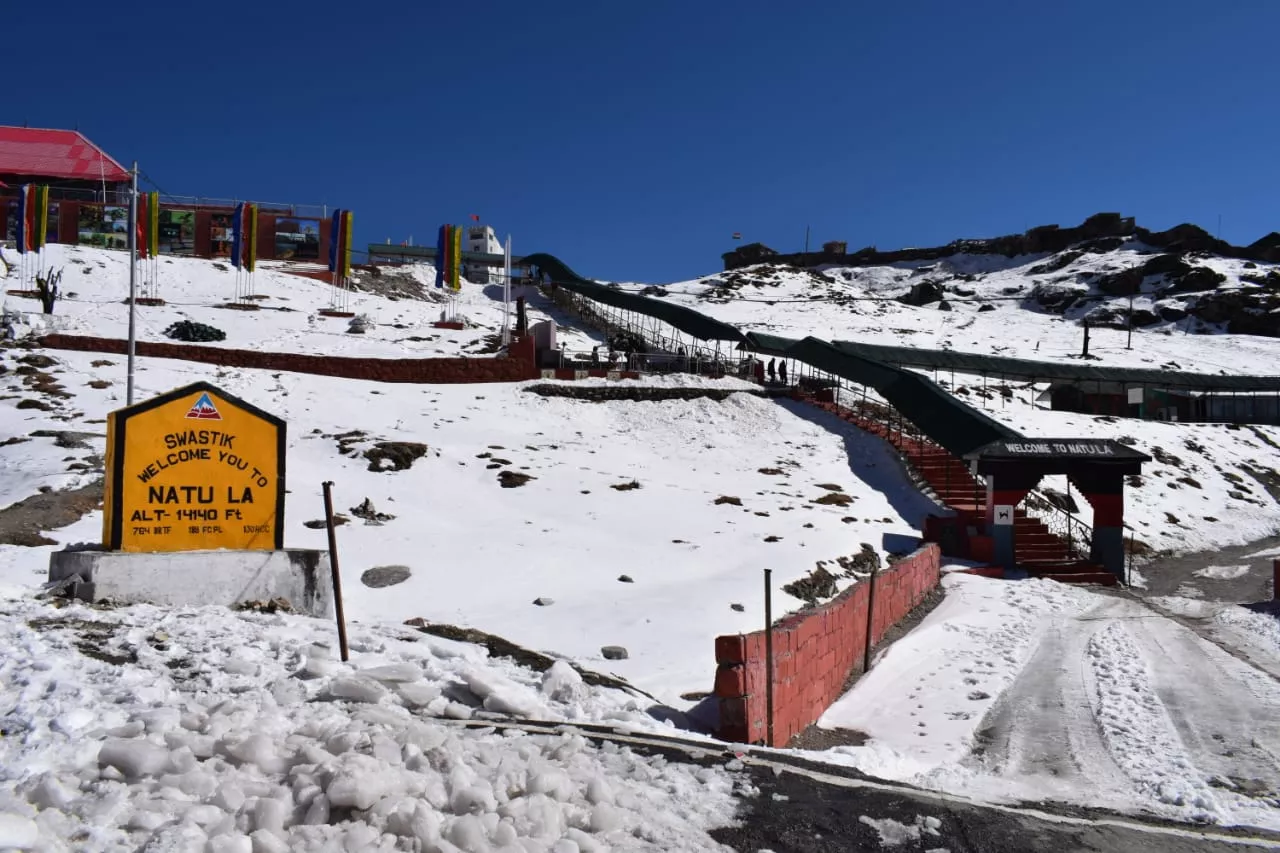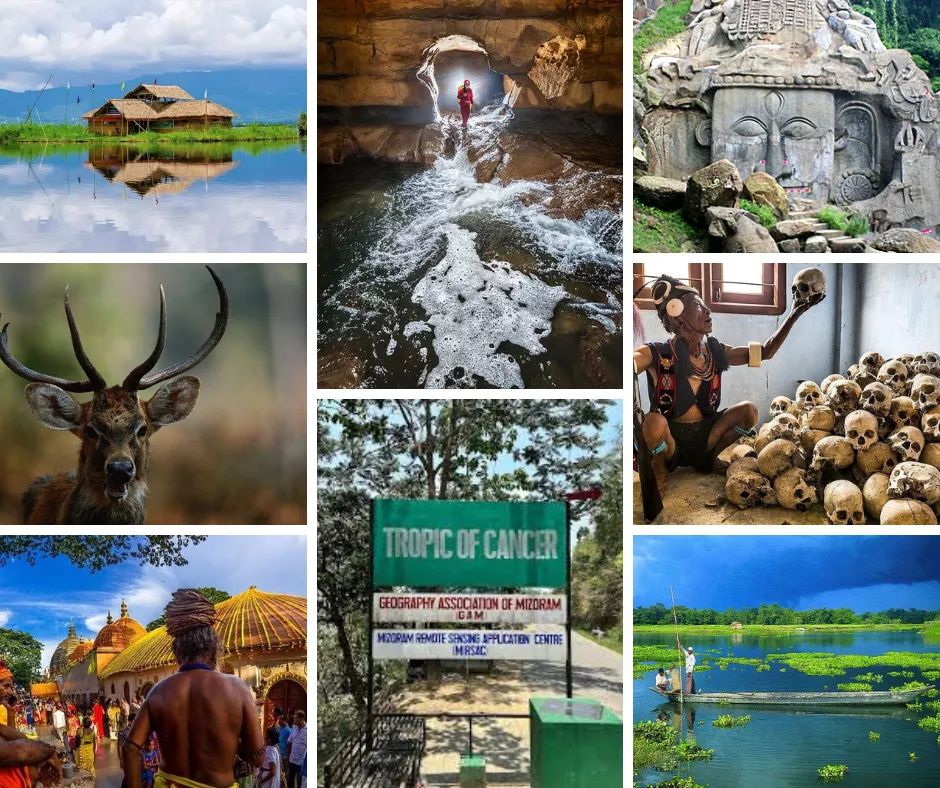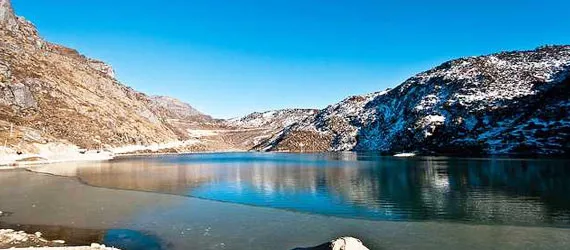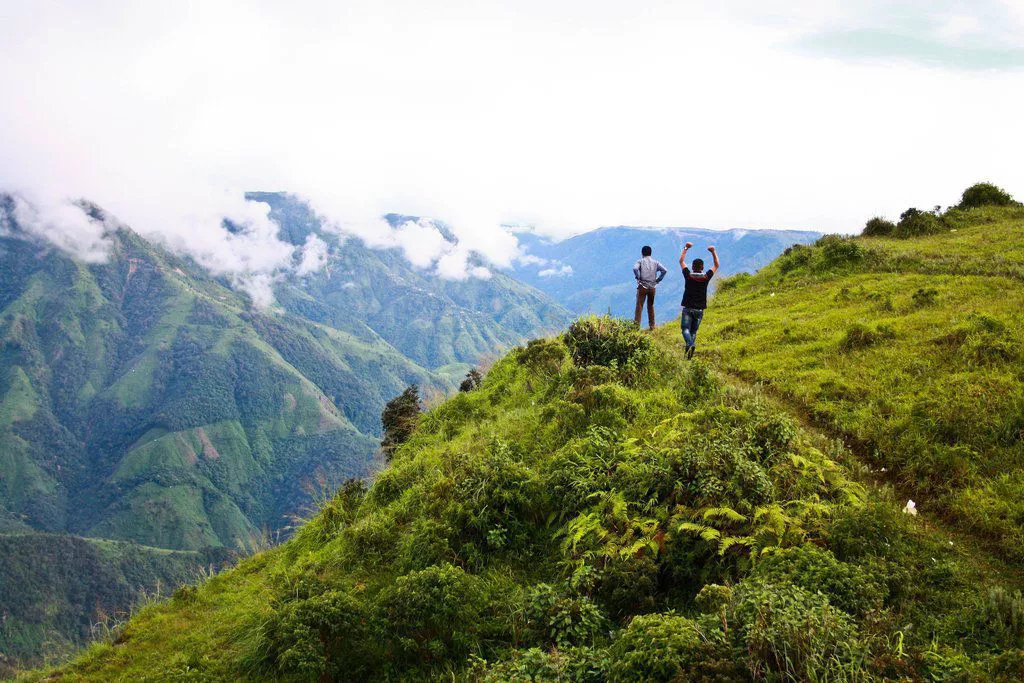Try imagining this: you’re walking along a forest trail through bamboo archways, with twisting ivy and vines winding up the mossy trunks of ancient trees. The forest is filled with a cacophony of the hooting calls of the hornbill and the rustle of leaves. You cross rickety bridges, jump over fallen trunks, and scramble over boulders, while colourful butterflies flutter around you.
The Namdapha trek lets you connect with the enchanting wilderness. Every day you’ll set out to explore the magical forest, and you’ll return in the evenings to an eco-camp where you’ll sleep in comfortable tents.
Situated in the Changlang District of Arunachal Pradesh, the Namdapha trek is truly for nature lovers. Almost 100 mammal and 50 reptile species thrive in this rainforest. The park was granted the status of a tiger reserve in the year 1983 since numerous tigers find shelter within its boundaries. Stretching over approximately 2,000 square kilometres and harbouring within it a varied terrain and all kinds of flora and fauna, the Namdapha National Park is the largest protected area in the eastern Himalayas. Home to about 500 species of birds, this park also holds importance among ornithologists. The forest is cut off from civilization and this untouched sanctuary boasts of a wide diversity of flora and fauna. The scent of exotic flowers, bright butterflies, and luxuriant greenery lure you deep into the wilderness. This national park is also home to leopards, snow leopards, and tigers along with species like the red panda, red fox, yellow-throated marten, elephants, bharals, gibbons, and more than 300 species of birds such as hornbills and rare snow-throated babbler birds. The only human inhabitants in this remote jungle are a tribe called the Lisu, who migrated from Myanmar and with whom you will get a chance to interact with.

Entrance to the Namdapha National Park
Is This Trek Difficult?
The Namdapha trek is a medium-intensity trek, which involves around 7-8 hours of walking every day. Challenges include traversing a changing terrain, battling leeches, and a slippery trail if it rains. As this is a multi-day trek that involves unmarked trails and varied terrains, it is best to do it with a trekking agency. If you are not a local, you would have to hire a vehicle. To avoid the hassle, take the services of a trekking agency.
Beginning from Dibrugarh, Namdapha rainforest trek takes you to Miao town, settled on the banks of the Noa Dihang River. The hiking part of the sojourn starts from Deban, from where you trek to Hornbill campsite. As you rest in your camps, under the starry sky, your senses will be treated to the chirpings of hornbills and the aroma of vivid flowers. Once you get to the last motorable point in the park, a 5-day hike begins and takes you through a breathtaking rainforest. While there aren’t any passes to cross, the excitement comes from the changing topography and thrilling river crossings.

The trek has bridge crossings such as this
Routes You May Need to Take
You need nine days to complete the Namdapha Trek. Though the actual trekking trail starts from Deban and takes five days to cover, two days are needed to get from Dibrugarh to Deban, and back. Once you get to Deban, this is the route you will follow:
Deban – Hornbill – Firmbase camp – Embeong – Baloo Khat – Deban
Deban to Hornbill Camp
The trek begins on an exciting note as you cross the Noa Dihing River on a rickety bamboo bridge. You have to cross another river, which opens into the wild rainforest. The landscape changes from bamboo and cane trees to tall trees that seem to touch the sky. Along the way, you may encounter birds of all kinds, deer, gibbons, and other animals. You set up camp at a site called Hornbill. This site also serves as a great location for bird watching.
A gibbon inside the Namdapha National Park
Hornbill Camp to Firmbase Camp
While you’ll be heading to Firmbase from Hornbill, you’ll be mostly walking in the company of cicadas, butterflies, and beautiful birds. It is not uncommon to see rufous hornbill, grey-cheeked warbler, and red-headed trogon. Tread on till lunch at Ranijheel, after which you descend to the Namdapha River, on the banks of which you will set up camp for today. This campsite is pretty and offers breathtaking views of the Dapha Bum Mountains.
Firmbase to Embeong
Moving from Firmbase to Embeong, you’ll encounter another thrilling river crossing and a difficult walk as well (depends on how fit you are). After crossing the Namdapha River, travellers will hike across loose boulders on the river bed. Although it takes time and patience, it really is manageable. After heading further on, you may meet the Lisu tribe at their village in the forest and can spend a big part of the day talking to them about their life and culture. In the evening, you can again set up camp near the Namdapha River, a little further away from the previous camping spot.
Embeong to Baloo Khat
Proceed by walking through the grasslands along the Namdapha River till you come to a hillock that takes you down to a stream. The climb up is a bit steep, so get ready for some light huffing and puffing. The campsite here happens to be the most beautiful site among others and is right on the bank of the river.
Huts inside the national park
Ballo Khat – Deban – Miao
Lastly, the trek comes with some exciting challenges and sights. You can climb up from the campsite through the forest, which will lead you through a major birding spot, where you can see birds like rufous vented yuhinia, black-throated parrotbill, white-crested laughing thrush, and many others. Thereafter starts a descent through a slippery slope. You can climb again soon after and reach Miao Vijaynagar Road, the final point of the trek.
From here on, people will drive to Miao, where usually everyone turns in for the night at a camp.
Best time to visit
The trek is only open from November to February, and any of these four months is good to tread the trail.
Inside Namdapha National Park
What to Pack for the Trek?
Since this is a trek through a rainforest, you should bring along two sets/ types of clothing for a day – one for when you hike during the day and the other to wear at night. Remember to pack trekking pants instead of shorts, long socks, and trekking boots to protect yourself against leeches in case it rains.
In conclusion, if you are looking for Jurassic Park, this is it! Vast undulating stretches of rainforests, muddy tracks snaking underneath a canopy so dense that only slivers of sunlight can stream in, the jewelled wings of butterflies streaking against the velvety green, and hoots and calls of wild beasts create a surreal atmosphere. The Namdapha and Noa Dihing rivers flow through the park and from the river bed, the scenery stretches further in the wilderness – the horizon bumping into the snowy Dafa Boom ranges. The trek sure is tiring but the beauty undoubtedly is impeccable.
